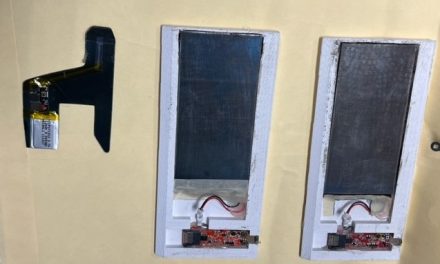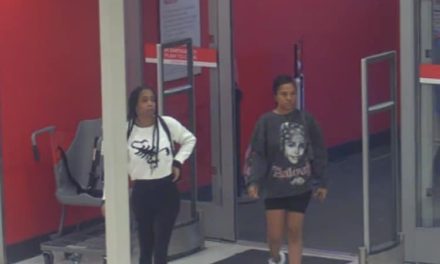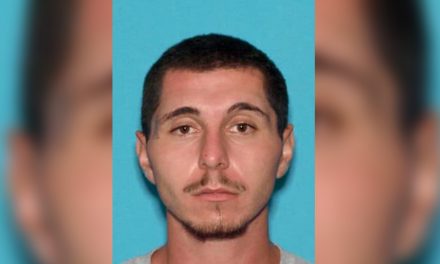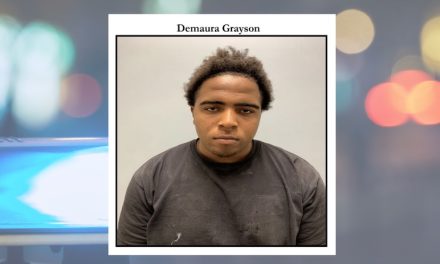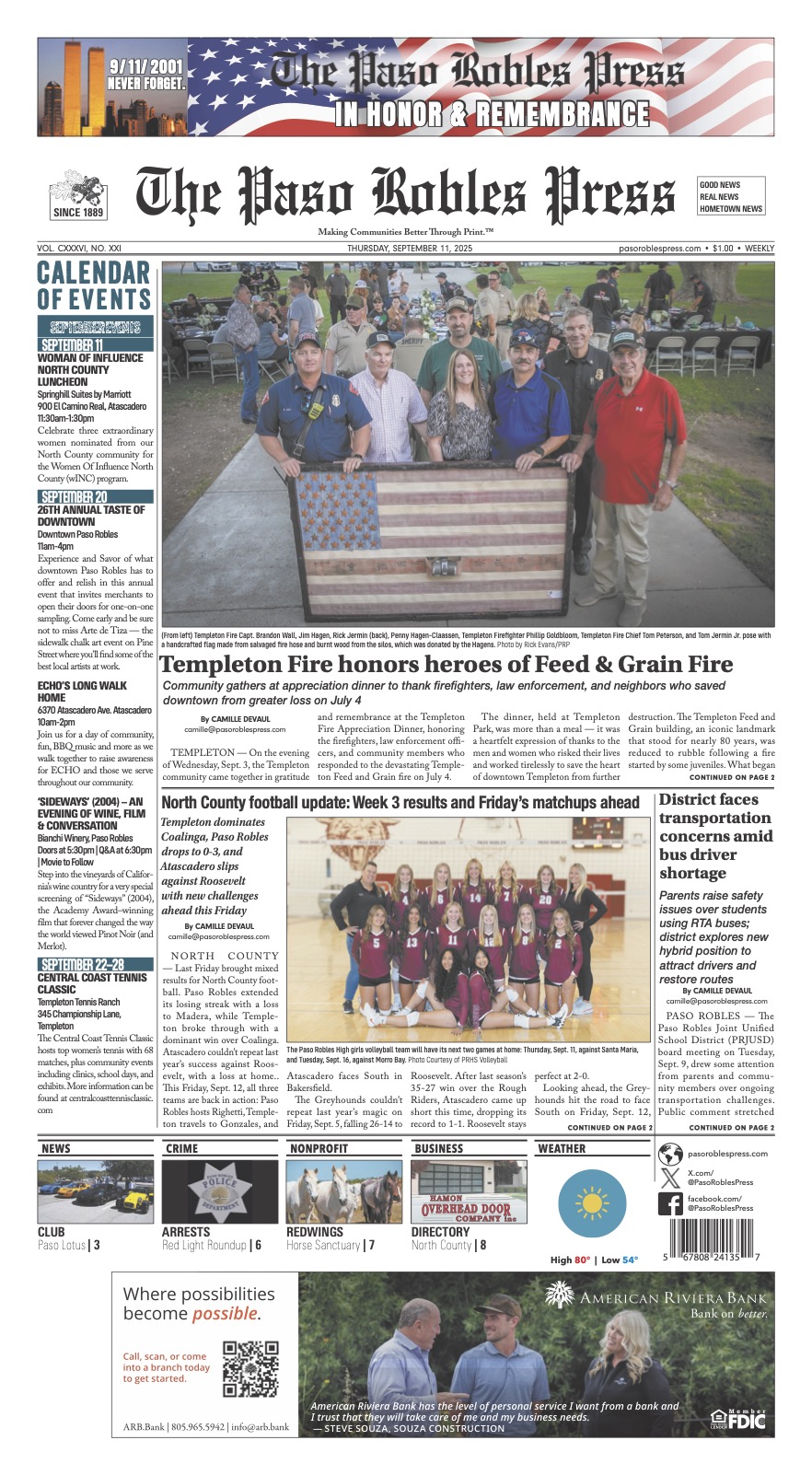Clint Cole discusses the investigation and resolution five years after he caught the case
PASO ROBLES — Friday, May 5 marked the five-year anniversary of the murder of Nancy Woodrum. The Paso Robles hairdresser, mother, grandmother, and friend was murdered on Cinco de Mayo in 2018. The Paso Robles Press sat down with recently retired San Luis Obispo County Detective Clint Cole to discuss the case from his point of view.
Cole retired from the Sheriff’s Department on March 10 after over 32 years of service, 10 of those years as a detective. In 2018, he was completing his first year serving as the first detective in the county’s cold case department. He is now famously known as the lead investigator on the Kristin Smart case, closing it after 26 years. While off duty at home on May 5, 2018, he received a call to come out to the suspicious scene of a missing woman’s home.
Woodrum lived off Geneseo Road towards the town of Creston. She lived alone in a studio apartment on the property with her daughter in another home there. Another larger home on the property was used as a vacation rental. On the weekend of her disappearance, a wedding party was renting the home.
Woodrum was reported missing after not showing up to plans with two of her friends. Her daughter and neighbor checked on the studio, where they found the sliding door open, horses not fed, her belongings and cars there, and blood seen throughout the home.
Cole arrived on the scene to deputies and patrol cars. He would be assisting the lead detective on the case. While waiting for search warrants to be approved, Cole and investigators took in the scene. A bloody handprint was found on a pillow in the home which would eventually play a key role in solving this case. Being that is was a small home, he was able to take in the scene in its entirety. Scuffle marks in the dirt outside of the home indicated something to Cole that he would soon understand.
At first glance, Cole had a gut feeling something terrible had happened to Woodrum. “It looked very, very suspicious as if she did not leave there on her own,” he said.
As the scene was being processed, close to 20 wedding guests began returning to their temporary home close to midnight. Interviews with the guests led to one questionable person who eventually would be ruled out. In the meantime, Highway Patrol officers found bed sheets and clothing on the side of the road towards Highway 58 — Woodrum’s daughter would soon confirm the items to be hers. Now, investigators thought more than ever that Woodrum was abducted.
“There wasn’t enough blood at the scene to show that she was dead,” Cole said. “My gut, my hunch, told me that something bad had happened, and she was most likely not alive.”
Finding a suspect, let alone a person of interest, turned into a more difficult task than expected. The 62-year-old hairdresser was a devout Jehovah’s Witness and well-loved throughout the community. Prior to her disappearance, Woodrum was in the process of selling her home, having work done to it by several different contractors. One of them stood out to investigators as a man with a temper and having disagreements with Woodrum over money. A call by Cole to a hired painter about the contractor didn’t lead to any further clues as to what may have happened. Leading up to her disappearance, no one saw anything suspicious about her behavior. While some potential persons of interest came up, none of them fit the bill becoming a classic “who done it” case.
However, Woodrum’s case was not without key evidence. Blood collected at her home was found to contain a combination of two separate DNAs — Woodrum’s and the suspect’s, which was identified as a male using a Y haplotype test. Unfortunately, combined DNA cannot be entered into Combined DNA Index System (CODIS), a national convicted criminal DNA database. Cole describes a pool of blood on the left rear floor of the bed, leading him to believe Woodrum was hit in the face causing a bloody nose. Phone records show Woodrum calling 911 at 12:17 a.m. — a call that did not go through, lasting zero seconds.
Cole credits Geofencing with helping investigators narrow down to their eventual suspect. Geofencing was a new technology at the time that is a Google product that captures cellular data to define a virtual geographical perimeter or fence. Google assigns an identification number to each phone that works like a fingerprint for that phone. SLO County would use this technology on Woodrum’s case, being one of the first in California to use it. Investigators drew a perimeter around Woodrum’s home where eventually, the same two devices were marked inside Woodrum’s studio at 1:15 and 1:30 a.m.
The mysterious phone pinging at Woodrum’s home, was soon identified as belonging to 46-year-old Carlo Alberto Fuentes-Flores — the painter.
“I learned a lesson in an important murder case: Talk to them in person,” said Cole of his previous phone conversation with Flores questioning him about the other contractor. “Knowing what I know now, he may not have been able to not show signs.”
Investigators then moved forward with the surveillance of Flores with tracking devices placed under his car. Questioning of people who knew him had nothing bad to say about him, and he revealed no criminal history. Cole even questioned Flores’s brother, who lived in San Miguel and cooperated with investigators by giving a DNA sample and denying his brother would have anything to do with Woodrum’s murder. This DNA sample would match the paternal lineage sample obtained from the bloody handprint at the scene. When Flores left a Coke bottle behind at a restaurant, investigators took their opportunity to grab it and get test his DNA — leading to a match.
Now, Cole and the lead investigator would bring the District Attorney’s office on board and prepare for bringing Flores in for questioning at the Templeton station.
On Dec. 18, 2018, Cole called Flores, who agreed to come into the station for an interview. Not taking any chances, law enforcement followed Flores and tracked him with a device. At the time of the call, Flores was taking his daughter to school. The interview started easy, according to Cole, building a repertoire with Flores.
“Because we had been surveilling him, we knew he liked to golf,” said Cole. “We knew he liked to go to certain places and do certain things.”
While in the interview, warrants for Flores’s Google searches revealed a search history for porn sites with older women content. Further searches revealed photo evidence of Flores’s affairs with other women. The week of Woodrum’s murder, she brought tamales out to Flores in hopes of converting him to her faith. Flores, though, took her kindness for flirtation.
“What it does is it ties everything together,” said Cole of the contents found on Flores’s phone.
While Flores initially denied having anything to do with Woodrum’s murder, it didn’t take him long to actually admit to the crime.
Heart pounding in his chest, knowing they were close to the truth, Cole says, “I looked at him, and I said ‘Carlo, you’re here because we know things. Not because we think things.”
And that was all it took. Flores broke down in tears, head in hands, admitting he murdered Woodrum and offering to take Cole and the lead investigator to Woodrum’s body. Flores led Cole to the Carissa Plains, where just off Highway 58, he laid Woodrum down, surrounding her with rocks and covering her with tumbleweeds.
Once a team was assembled to finish the recovery, Cole brought Flores back to the Templeton station, where they would finish the interview. Flores admitted to Cole that he entered Woodrum’s home through an unlocked sliding door with the intention of raping her. Later search reports on his phone locations revealed that Flores spent 20 minutes at a Paso Robles church on Golden Hill Road before heading out to Woodrum’s.
Flores would later admit to little further details on what happened that night, even though he was shown and admitted to being in the home for nearly four hours.
“You never get the full story from those guys,” said Cole. “We got most of it, but he was in that house a long time. What are you doing in that house for that period of time?”
But he added, “It was actually eating at him. It’s not like he didn’t have remorse which was why the death penalty was taken off the table. But was he remorseful because he got caught, or was he actually remorseful about what he did? There is a fine line.”
Flores waived his right to a jury trial and was sentenced to life in prison without the possibility of parole in February 2022. Cole firmly believes that this was not Flores’s first sexual crime. While records show Flores in Phoenix, Arizona, for an undisclosed time period, law enforcement there was contacted and nothing has come back in connection to Flores.
“This appears to be one of those weird circumstances where his first and only crime was a brutal one,” said Cole. “It is a sad case because Nancy [Woodrum] was a true innocent victim … was in her own bed at night sleeping and this monster came and snatched her out of her bed.”
Cole notes that he was not the only one to solve the case and rather, it was a multitude of hard work and teamwork from the lead investigator and everyone involved, including the District Attorney’s office and other detectives from the agency.
For any other victims out there, who may not be coming forward, Cole wants them to know, “An important message is for victims out there is there are victims out there that are afraid to report things thinking no one is going to do anything. There are people out there that will fight for you. And we were never going to give up until we found out who killed Nancy, and I think that’s some of my biggest takeaways [from this case].”
Cole remains in contact with Woodrum’s family, checking in each anniversary. It is clear that he will never forget Woodrum, the woman he never was able to meet but was able to seek her justice and lay her to rest.
Originally published in the Thursday, May 11 issue of Paso Robles Press and Atascadero News.



